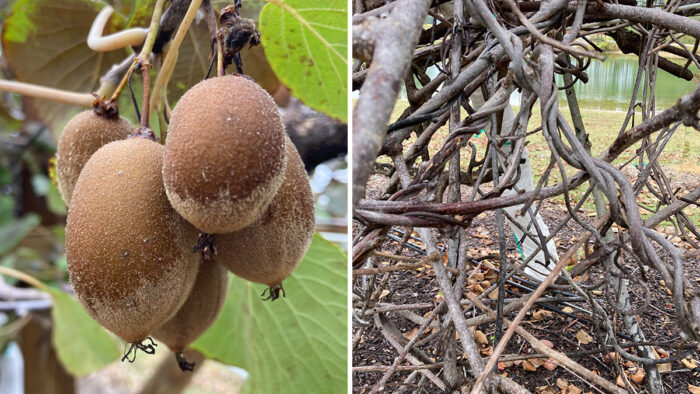
Did you know you can grow your own kiwi pretty easily in our part of the South? Kiwi plants can be slow to get started but are generally long-lived vines. They require a little extra care because they are fruiting plants, but if you’re a kiwi fan, it’s worth it.
With patience and strong supports, kiwis are worth the effort
Fuzzy kiwi fruit (Actinidia deliciosa and cvs., syn. A. chinensis, Zones 7–9) are mostly dioecious. This means you need a male plant and up to four females for good fruit set. ‘Tomuri’ is a popular male and ‘Vincent’, ‘Saanichton’, and ‘Hayward’ are popular female varieties. Plant the vines about 15 feet apart, and make certain you label them. If something happens to one, you will need to know what to replant, especially since kiwi vines can be slow to flower, taking three to five years.
Kiwi produce big vines that need a strong support system to grow on. Unlike grapes, which can be grown on a single wire, kiwis are better on a wider frame with five to seven supporting wires spread out like a table for them. They can also be grown in the landscape on very sturdy arbors. They have attractive big leaves, yellow fall color, and very fragrant flowers. In the winter, the unusual curling brown vines are sculpturally attractive.
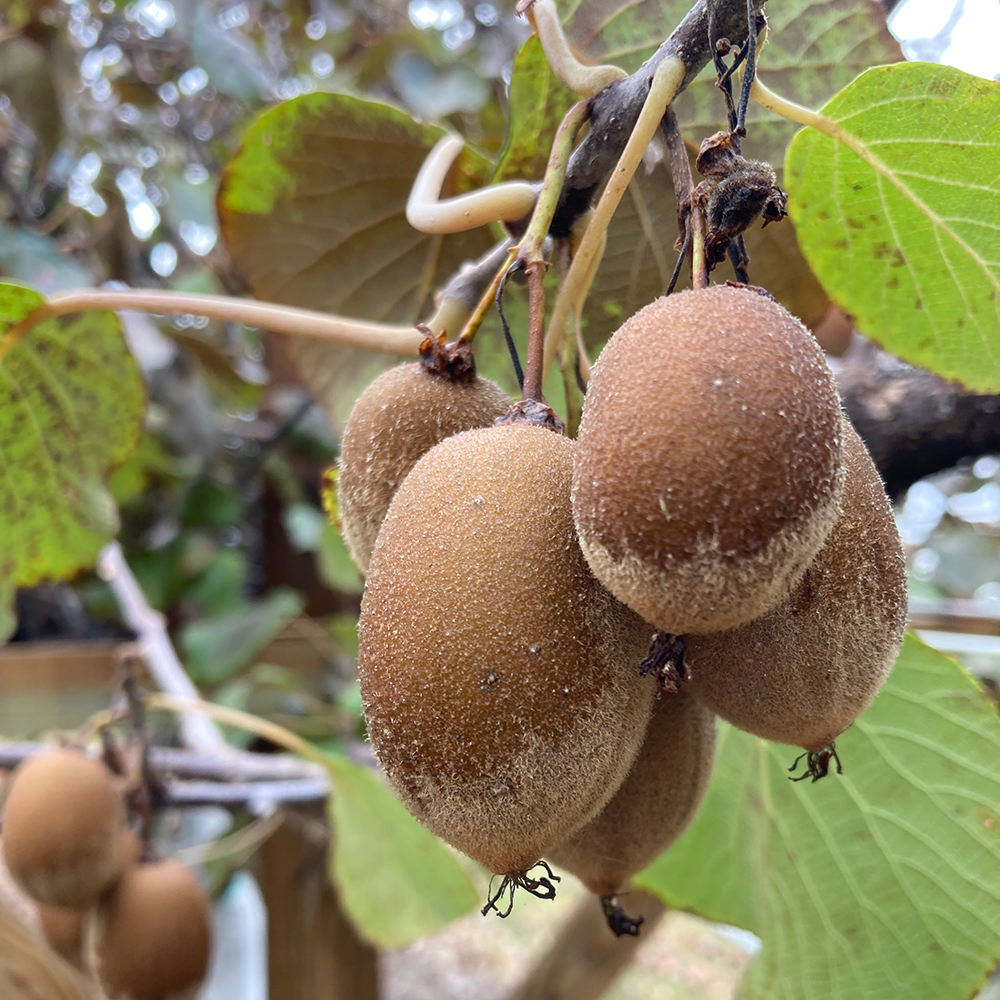
Regular feeding and winter protection get the best kiwi results
To keep your plants producing good fruit, it is important that they be well fed. We apply a balanced fertilizer twice a year in February and June. Kiwis have few problems in our area other than an occasional leaf disease. Otherwise, they are fairly low maintenance. We prune them in the summer when we can see and avoid the fruit, or in the winter when they are completely dormant.
The fruit ripens in October. It can be allowed to stay on the vine until soft, or it can be harvested once it is ripe but before it is soft. The latter may be the case if we have an unexpected early freeze. Storing fruit works better if it is harvested when ripe but still firm. It can be stored for months in the refrigerator. Kiwis are one of the few fruits that sweeten as they are stored.
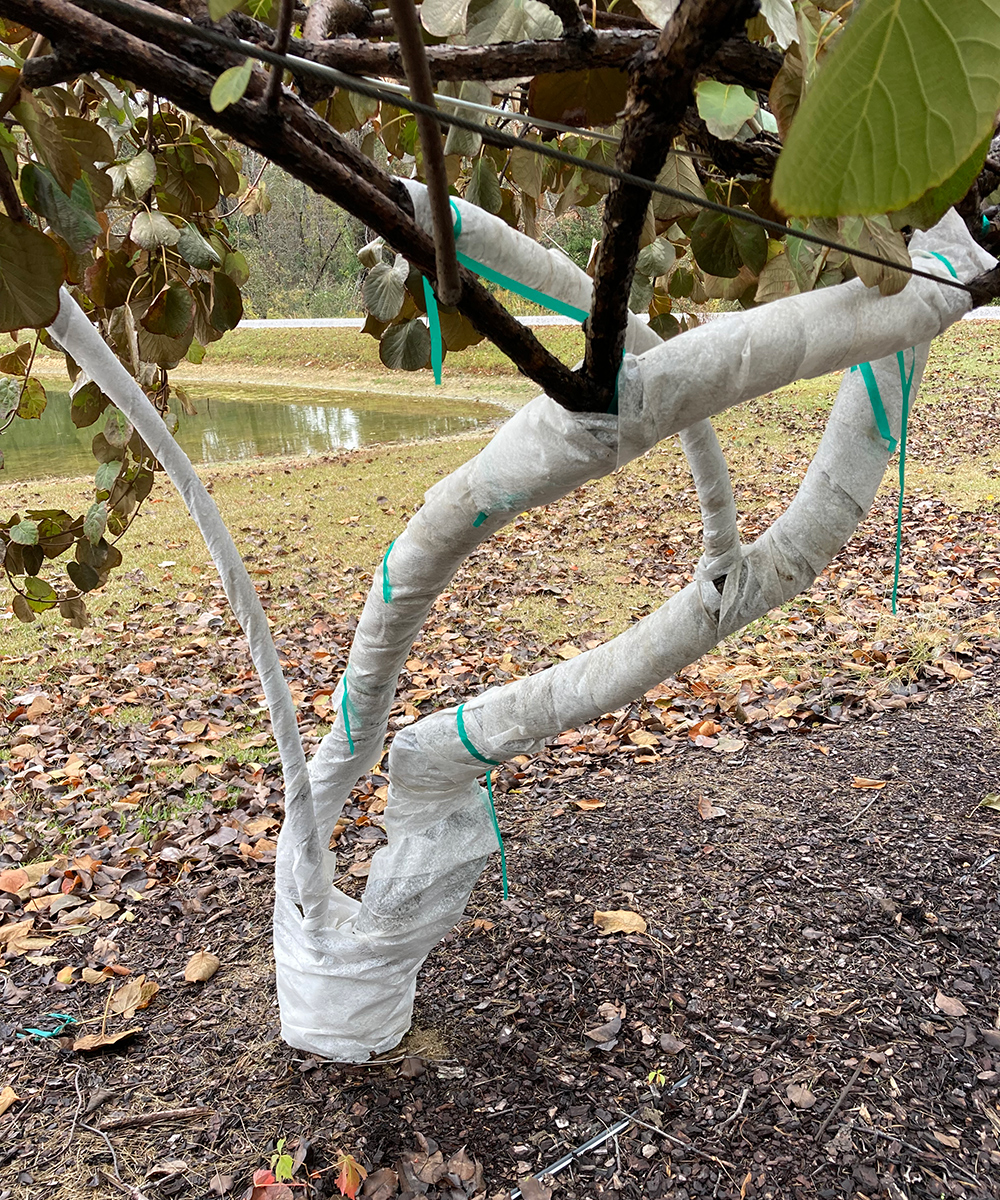
In our area, we are near the top of the growing region, so winter protection is usually necessary. To protect the trunks in case of very cold nights, we wrap them in 2-oz. frost cloth ahead of the first hard frost. The roots rarely freeze, but the trunks can freeze, and that means a year or two of waiting for flowering again.
Even though kiwis take a little time and commitment, they provide a deliciously worthwhile reward.
—Shelley and Jason Powell own and manage Petals from the Past, a garden center in Jemison, Alabama.

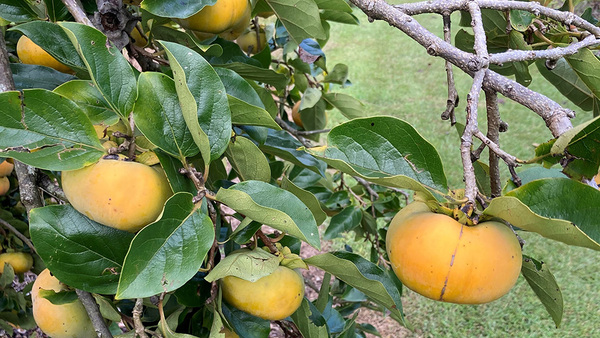
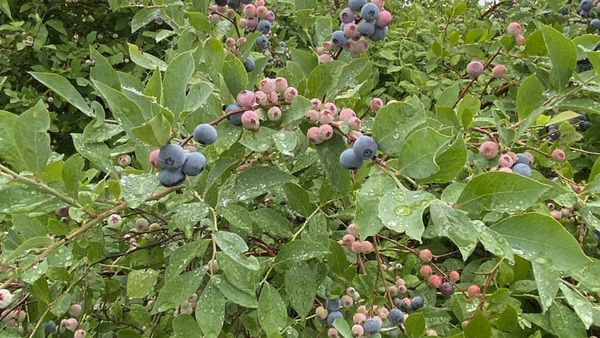
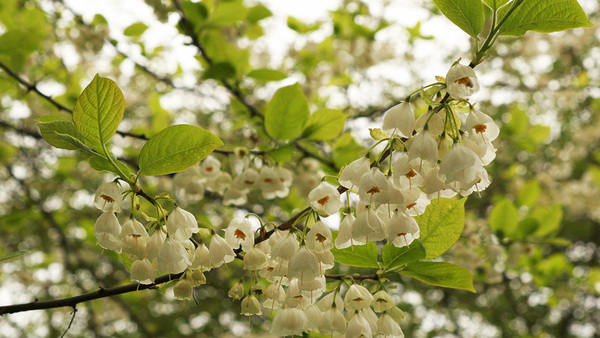













Comments
Log in or create an account to post a comment.
Sign up Log in